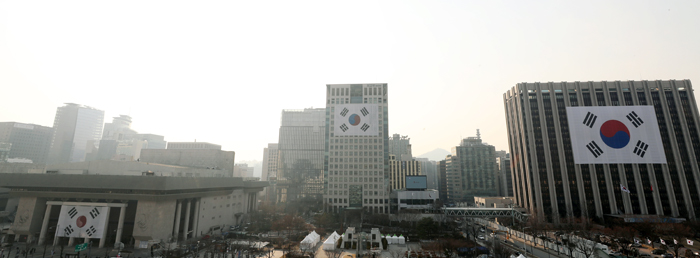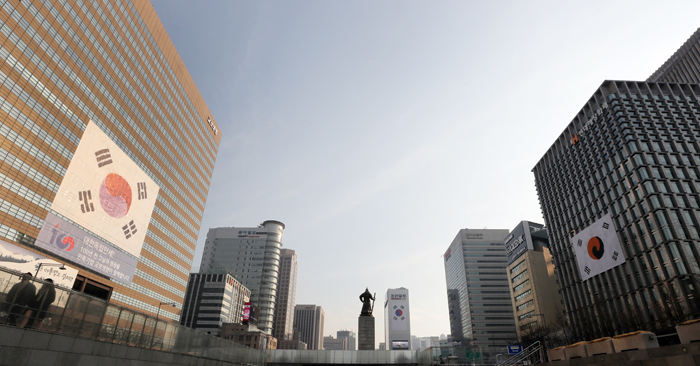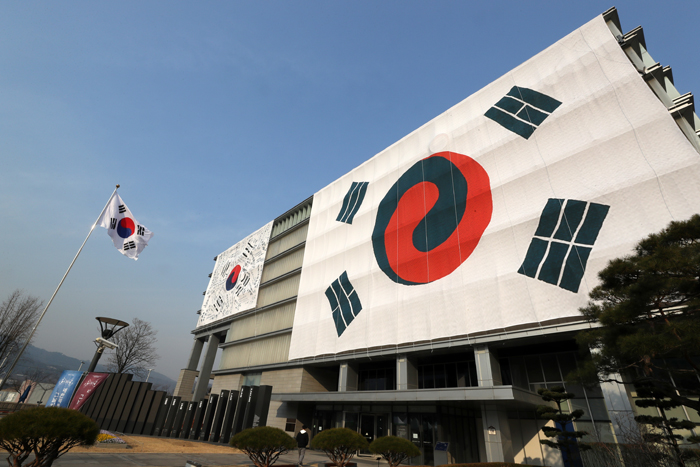
Korean flags dating back to the early 1900s on Feb. 27 hang on buildings facing Gwanghwamun Square two days before the centennial anniversary of the March First Independence Movement. Pictured are Taegeukgi flags from 1923 (left), 1941 (center) and present day.
By Jeon Han and Lee Hana
Photos = Jeon Han
Seoul | Feb. 27, 2019
Eight giant flags hang on buildings facing Gwanghwamun Square in downtown Seoul. Why does each flag look slightly different from each other?
This is because the eight flags that went up in central Seoul on Feb. 27, two days before March First Independence Movement Day, represent milestones over the past hundred years of Korean history.

Flags made during various stages of the March 1 Independence Movement in 1919 on Feb. 27 hang on buildings facing downtown Seoul’s Gwanghwamun Square. The two flags shown here facing each other were used in 1919 during the movement.
The oldest flag of the bunch hangs from the Hyundai Insurance building to the right of the statue of King Sejong the Great facing the square.
Known as the Jingwansa Taegeukgi, this flag was discovered in 2009 at Jingwansa Temple in Seoul during restoration work. The flag was made by drawing over a Japanese flag during the movement and saw wide circulation and use.
The flag right opposite the Jingwangsa Taegeukgi, also made in 1919, is the Nam Sang-rak Jasu Taegeukgi. This was hand-sewn by Korean independence activist Nam Sang-rak and his wife for use in protests held on April 4, 1919.
Several of the flags offer a visual representation of how the Korean government changed over time.
Those on the Sejong Center for the Performing Arts and the KT Gwanghwamun building were both hung at the National Assembly of the Korean Provisional Government in Shanghai.
The flag on the center was used in 1923 by the provisional government in Shanghai, while that on the KT building was made around 1940.
Both flags were crafted by Kim Bong-jun, a cabinet member of the provisional government, and his wife No Yeong-jae.

Two flags hang from the National Museum of Korean Contemporary History in Seoul, the left one decorated with the signatures of Korean independence activists and the one on the right hoisted in 1942 at the Waldorf Astoria Hotel in New York.
hanjeon@korea.kr